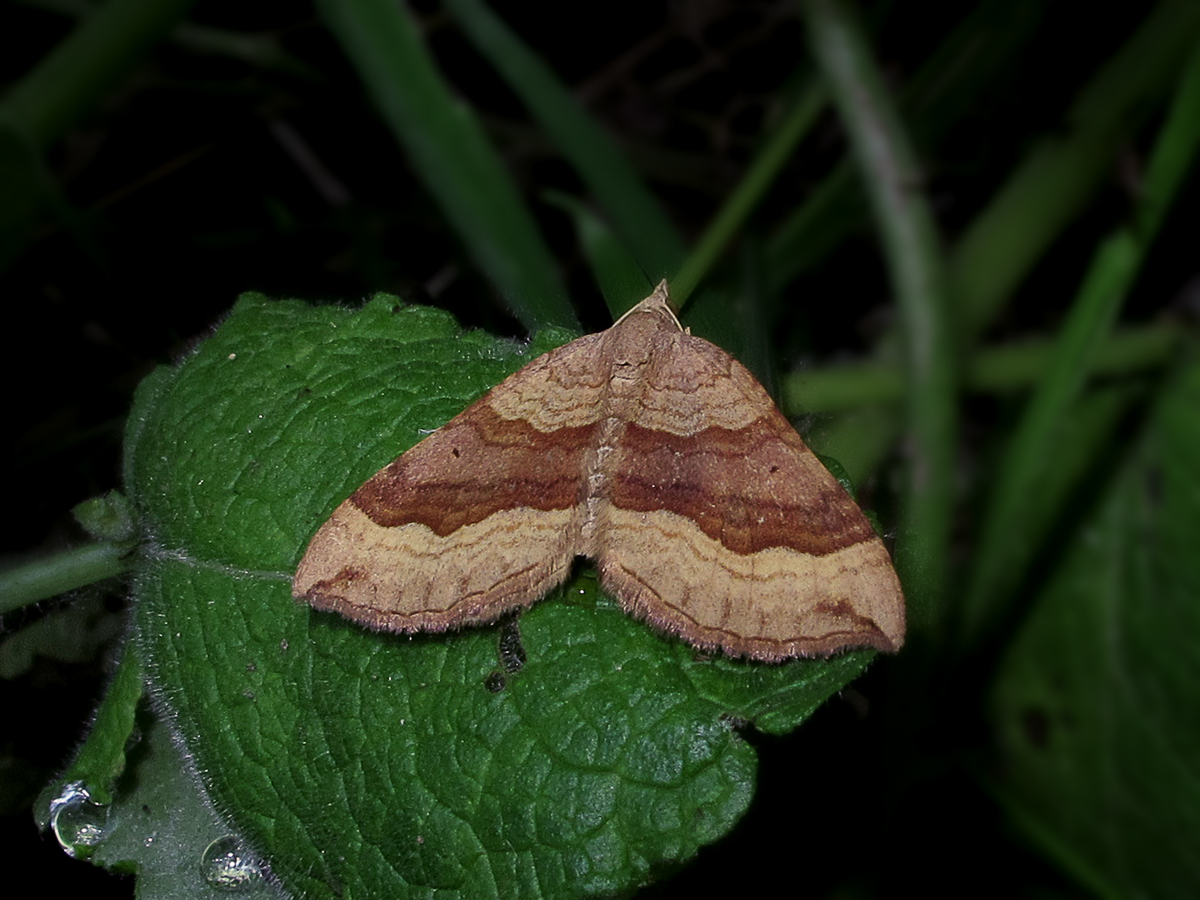
Photo © jacilluch
Scotopteryx chenopodiata, the shaded broad-bar, is a moth of the family Geometridae. It was first described by Carl Linnaeus in his 1758 10th edition of Systema Naturae.
The wingspan is 25–30 mm. The length of the forewings is 16–19 mm. The colouration is highly variable. It ranges from yellow brown, light brown, red brown and grey brown to grey. The forewings have several, mostly parallel, undulate crosslines. There is a prominent broad dark brown band in the median field comprising two distinct shades, the middle being greyer, the edges more ferruginous. In addition, the females are usually brighter yellowish than the males, but both sexes vary in tint. There is also a small apical streak. The hindwings are pale with faint crosslines. The caterpillar is yellowish grey to slate grey. The dorsal line is dark and interrupted, the side stripes are light and continuous. The reddish-brown-glossy pupa has a dotted surface. The cremaster is wide, with two long hook-shaped thorns and two fine lateral bristles rolled up at the top
The moth flies in one generation from June to August. The larva feeds on Centaurea scabiosa, Centaurea jacea, Knautia arvensis, Knautia dipsacifolia, Scabiosa columbaria, Cirsium arvense, Cirsium oleraceum, Origanum vulgare, Thymus pulegioides, Sanguisorba officinalis, Eupatorium cannabinum, Clinopodium vulgare, Solidago gigantea and Vicia cracca.
This species can be found throughout much of the Palearctic from Europe it extends across Central Asia to Siberia, the Russian Far East (Sakhalin), Amur, Altai Mountains, and Ussuri.
In Europe it extends from the Iberian Peninsula, in the north, to northern Fennoscandia in the south to the Italian Peninsula and the Balkan Peninsula.
Source: Wikipedia
The primary larval foodplants are clovers (Trifolium spp.) and vetches (Vicia spp.).